
|
Astronomy Picture Of the Day (APOD)
 Charles P. Conrad Jr 1930 1999
Charles P. Conrad Jr 1930 1999
15.07.1999
Known for his sense of humor and infectious grin, Charles P. "Pete" Conrad, as commander of the Apollo 12 mission, was the third person to walk on the moon. Not a tall man, Conrad stepped down onto the lunar surface in November of 1969 and gleefully commented, "Whoopie!
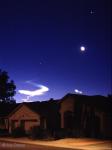 Moon, Planets, and Rocket Trails
Moon, Planets, and Rocket Trails
14.07.1999
Are you an early riser? Over the last month or so, the bright planets Jupiter and Saturn have come to adorn eastern skies before sunrise. In fact, astrophotographer Joe Orman anticipated that an early...
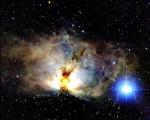 The Flame Nebula in Infrared
The Flame Nebula in Infrared
13.07.1999
What lights up the Flame Nebula? Fifteen hundred light years away towards the constellation of Orion lies a nebula which, from its glow and dark dust lanes, appears like a billowing fire. But fire, the rapid acquisition of oxygen, is not what makes this Flame glow.
 A Delta Rocket Launches
A Delta Rocket Launches
12.07.1999
A Delta rocket is pictured launching NASA's FUSE satellite earlier this month. In use since 1960, Delta rockets have been launched successfully over 250 times. Scientific satellites placed into orbit by a Delta rocket include IUE, COBE, ROSAT, EUVE, WIND, and RXTE. Commercial launches include Iridium.
 Barringer Crater on Earth
Barringer Crater on Earth
11.07.1999
What happens when a meteor hits the ground? Usually nothing much, as most meteors are small, and indentations they make are soon eroded away. 49,000 years ago, however, a large meteor created Barringer Meteor Crater in Arizona, pictured above. Barringer is over a kilometer across.
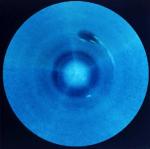 Southern Neptune
Southern Neptune
10.07.1999
Neptune, the Solar System's outermost gas giant planet, is 30 times farther from the Sun than Earth. Twelve years after a 1977 launch, Voyager 2 flew by Neptune and found surprising activity on a planet that receives only 3 percent as much sunlight as Jupiter.
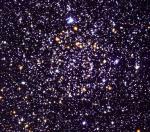 NGC 7789: Galactic Star Cluster
NGC 7789: Galactic Star Cluster
9.07.1999
At 1.6 billion years old, this cluster of stars is beginning to show its age. NGC 7789 is an open or galactic star cluster about 8,000 light-years distant toward the constellation Cassiopeia and lies near the plane of our Milky Way galaxy.
 Eruptive Prominence
Eruptive Prominence
8.07.1999
Activity on our parent star continues to increase as the sun approaches a maximum in its 11-year solar cycle, expected in the year 2000. On June 14 - only a week before the solstice - the space-based SOHO observatory recorded this stunning view of an immense prominence erupting from the sun's southern latitudes (south is up).
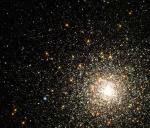 M80: A Dense Globular Cluster
M80: A Dense Globular Cluster
7.07.1999
If our Sun were part of M80, the night sky would glow like a jewel box of bright stars. M80, also known as NGC 6093, is one of about 250 globular clusters that survive in our Galaxy.
 A Sun Pillar
A Sun Pillar
6.07.1999
Have you ever seen a sun pillar? When the air is cold and the Sun is rising or setting, falling ice crystals can reflect sunlight and create an unusual column of light. Ice sometimes forms flat, stop-sign shaped crystals as it falls from high-level clouds.
|
January February March April May June July August September October November December |
|||||||||||||||||||||||||||||||||||||||||||||||||